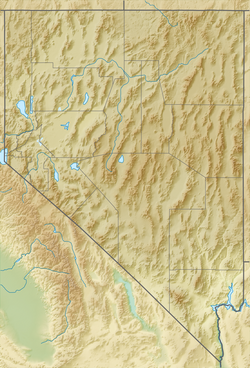| Groom Range | |
|---|---|
 A portion of Groom Range with highest peak in the center | |
| Highest point | |
| Elevation | 2,819 m (9,249 ft) |
| Geography | |
| Location | Part of the Nevada Test and Training Range |
| Country | United States |
| State | Nevada |
| District | Lincoln County |
| Range coordinates | 37°26′59.837″N115°44′5.115″W / 37.44995472°N 115.73475417°W |
| Topo map | USGS Groom Range |
The Groom Range is a mountain range in Lincoln County, Nevada. [1] The range was renamed from Naquinta Mountains or Tequima Range in 1864, after Bob Groom, who discovered minerals in the range. [2] It is located within the Nevada Test and Training Range, north of Groom Lake. The highest point in the Groom Range is 9,249 feet. The Groom Range is situated 26.6 miles north of the dry Groom Lake.

